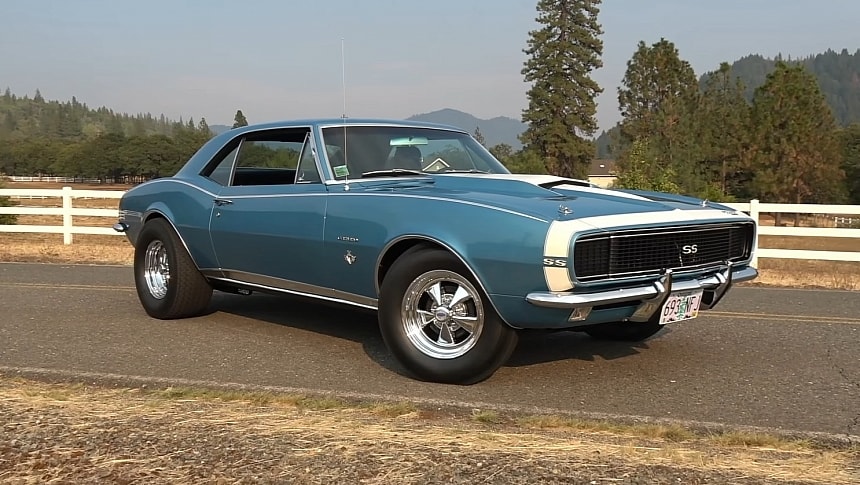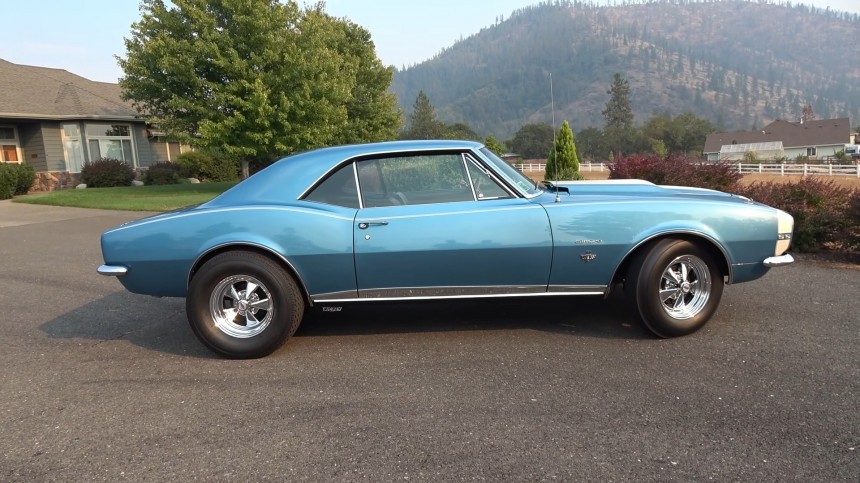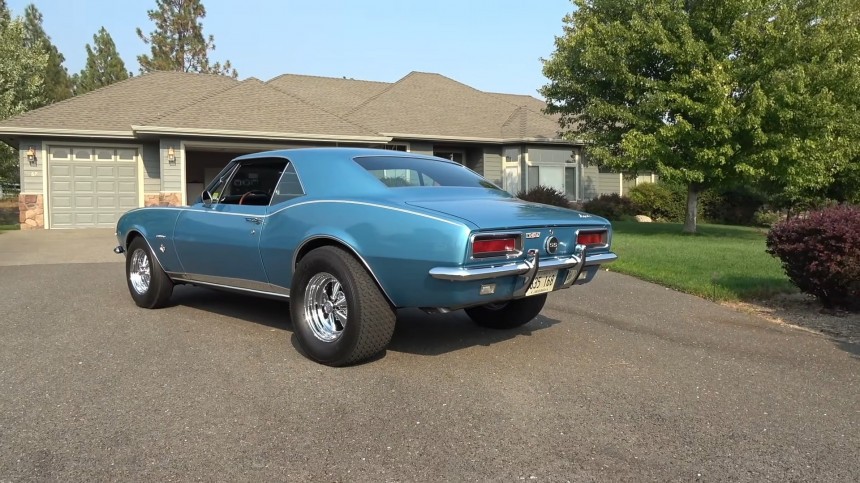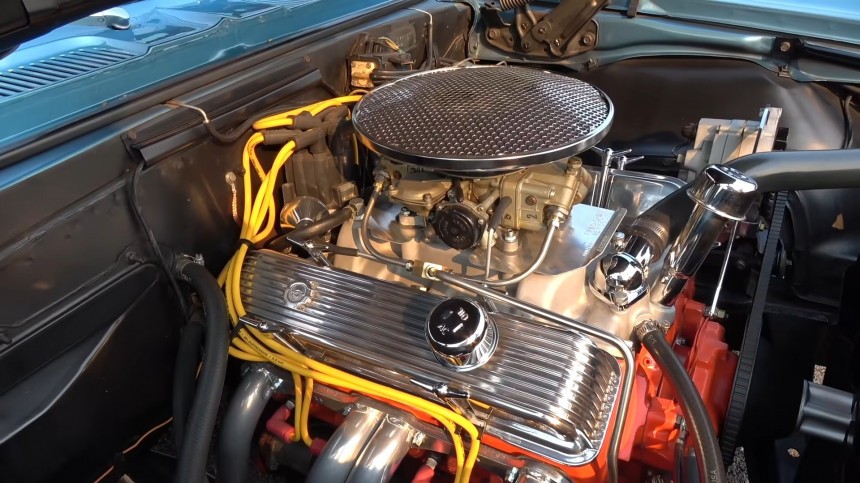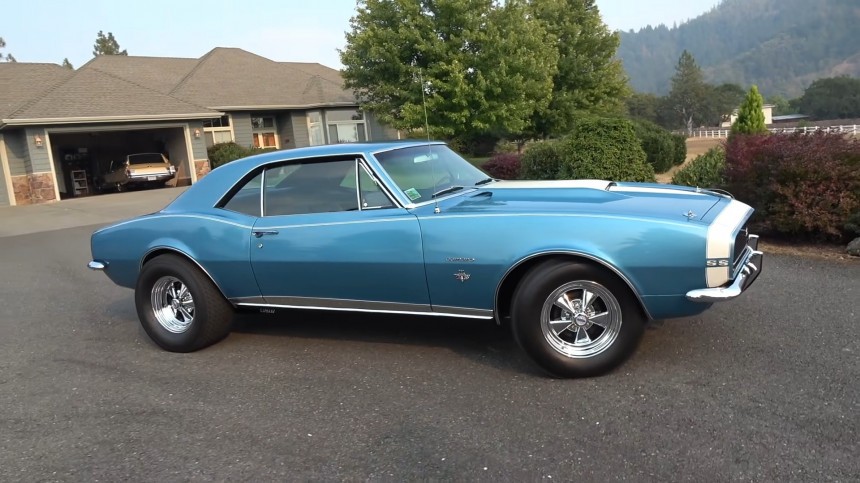Introduced in the fall of ’66 for the 1967 model year, the Chevrolet Camaro never quite managed to upset its archrival, the Ford Mustang, in sales numbers. But that doesn’t mean the pony Chevy was a dull machine. Quite the contrary – and its Trans Am performance from the late sixties (backed by Mark Donohue’s mastery) is solid proof of that. The spirited aura gained in the racing series convinced many car nuts to hotrod their cars into savage street brawlers.
The first generation of the Camaro was a brief shooting star across the supernova-filled sky of Detroit in the late sixties when the Golden Age was at its brightest. The Chevrolet pony had to shine bright to make a name for itself, and it did so with flying colors.
The nameplate came about in a late effort by Chevrolet to pull the reins on the Mustang and its showroom and track dominance. Even so, the conjured efforts of General Motors’ most popular division weren’t enough to break in the wild stallion. Some cars are just born under a lucky star, and there’s nothing anyone can do about it. Nonetheless, Chevrolet did its best.
In 1967, when the nameplate was officially born, sales amassed 221,000 units – not the most exhilarating numbers ever to be displayed in the records of the Bowtie carmaker. The Nemesis from Ford was over twice that number (472k) despite being in freefall from previous years. However, the Camaro had something Ford lacked completely: performance engines.
For the model year, Ford’s lineup consisted of three powerplants: a 200-cube straight six (3.3 liters), three 289s (4.7 liters), and a 390 (6.4 liters) – all V8s. That was it; the Camaro, on the other hand, offered everything from economy to breakneck fun. Two sixes (230 and 250 cubic inches – 3.8 and 4.1 liters), and six eight-cylinders: two 327s (5.4 liters), one 350 (the famous Chevy small-block debuted with the Camaro), and the infamous 302-incher (4.9 liters) from the Z28 Special Performance Package. Later in the model year, a pair of hard-punching 396-inchers (6.5 liters) big-blocks were added.
The Camaro offered a motor for every taste, purpose, pocket, and preference, from economy to tire shredders. Chevrolet cleverly used the car to debut the now-legendary 350 cubic-inch V8, offered exclusively on the Camaro in its debut year and seconded by a Super Sport badge. Later in the model year, the SS would adopt big-block tenure with the 396 V8 and its 325-hp muscle.
Apparently, the 350 was a far better choice since more than 29,000 customers ordered one, compared to 5,100 who preferred the late-released big blocks. (The other high-performance version, the Z28, was a mystery in the sales literature, and only 602 examples were ordered with the famous package). The Camaro was a young car for young men, and many of them opted to hotrod their pony Chevys to suit their racing ethos better.
In the spring of ’69, a very enthusiastic Lawrence Weiner bought a low-miles, bone-stock 1967 Camaro SS350 from the original owner. The seller parted ways with the car because he had been drafted into the military. Larry Weiner didn’t waste time with his newly purchased automobile and began improving it, little by little.
Cragar S/S mags, Nickey traction bars, Hurst Gabriel Dual Duty shock absorbers, a Stinger hood styled after the infamously fast and powerful 1967 Corvette 427, finned valve covers, or a fly-eye air cleaner. But that wasn’t it: an Edelbrock C3B aluminum high-rise intake manifold, a Holley 3310 dual inlet 780 CFM carburetor, Doug Headers, a hot cam from an L79 327 / 350-horse V8.
Two years later, in 1971, Larry, like many young men in America during the Vietnam War – received an invitation from Uncle Sam. In a sad twist of fate, he was now the one selling the Camaro after putting all the hard work, money, and energy into building it into a street racer. Seller’s remorse or not, Lawrence Weiner never did get over that Camaro and, in 2008, bought another one.
After searching high and low for about five years, Larry found what he was looking for - a numbers-matching, all-original survivor Camaro from 1967, almost identical to the one he had owned four decades before. He bought the car and left it untouched for a decade before finally giving in to the hot-rodding bug that had laid dormant since 1969.
The result is a Marina Blue twin of his old car, another RS/SS350 Camaro that has every single part that the one from 1969 had. However, as years went by, Larry had the fortune of having a more generous budget at his disposal, so the present day-two Camaro has several extra goodies that the black one from 55 years ago didn’t.
The original 350-cube V8 was pretty solid, with 295 hp on tap. This uprated small block, however, sports 386 hp, dyno-attested twice, for good measure. That’s more than the fabled 396 V8 made back in the day in factory form (375 hp). Not a single modification is permanent - every aftermarket part is bolt-on. It can be removed just as easily as it was installed. Also, in true gearhead spirit, each stock part has been boxed and labeled should Larry wish to return the car to its original condition at any time.
Again, the owner of the car in the video below, shot by Lou Costabile last fall in Oregon, installed the aftermarket parts with simple hand tools in his garage and driveway. Granted, some of the day-two additions were no longer in production in 2018, when Lawrence Weiner set about redoing his Camaro project from 1969. He bought them from various sources, but all are period correct.
That car from 55 years ago spurred a lifelong passion for performance cars and sparked the involvement of Larry Weiner in this business. In the early 90s, he founded a company that eventually became a manufacturer of exact duplicates of Nickey Chevrolet traction bars. Why these specific parts?
In the summer of 1969, Larry installed Nickey traction bars after breaking the factory spring plates and T-bolts on the Camaro SS while going head-to-head against a 1969 GTO. These eliminated the plaguing wheel-hop that first-gen Camaros owners complained about (especially mono-leaf-fitted examples).
The nameplate came about in a late effort by Chevrolet to pull the reins on the Mustang and its showroom and track dominance. Even so, the conjured efforts of General Motors’ most popular division weren’t enough to break in the wild stallion. Some cars are just born under a lucky star, and there’s nothing anyone can do about it. Nonetheless, Chevrolet did its best.
In 1967, when the nameplate was officially born, sales amassed 221,000 units – not the most exhilarating numbers ever to be displayed in the records of the Bowtie carmaker. The Nemesis from Ford was over twice that number (472k) despite being in freefall from previous years. However, the Camaro had something Ford lacked completely: performance engines.
The Camaro offered a motor for every taste, purpose, pocket, and preference, from economy to tire shredders. Chevrolet cleverly used the car to debut the now-legendary 350 cubic-inch V8, offered exclusively on the Camaro in its debut year and seconded by a Super Sport badge. Later in the model year, the SS would adopt big-block tenure with the 396 V8 and its 325-hp muscle.
Apparently, the 350 was a far better choice since more than 29,000 customers ordered one, compared to 5,100 who preferred the late-released big blocks. (The other high-performance version, the Z28, was a mystery in the sales literature, and only 602 examples were ordered with the famous package). The Camaro was a young car for young men, and many of them opted to hotrod their pony Chevys to suit their racing ethos better.
Cragar S/S mags, Nickey traction bars, Hurst Gabriel Dual Duty shock absorbers, a Stinger hood styled after the infamously fast and powerful 1967 Corvette 427, finned valve covers, or a fly-eye air cleaner. But that wasn’t it: an Edelbrock C3B aluminum high-rise intake manifold, a Holley 3310 dual inlet 780 CFM carburetor, Doug Headers, a hot cam from an L79 327 / 350-horse V8.
Two years later, in 1971, Larry, like many young men in America during the Vietnam War – received an invitation from Uncle Sam. In a sad twist of fate, he was now the one selling the Camaro after putting all the hard work, money, and energy into building it into a street racer. Seller’s remorse or not, Lawrence Weiner never did get over that Camaro and, in 2008, bought another one.
The result is a Marina Blue twin of his old car, another RS/SS350 Camaro that has every single part that the one from 1969 had. However, as years went by, Larry had the fortune of having a more generous budget at his disposal, so the present day-two Camaro has several extra goodies that the black one from 55 years ago didn’t.
The original 350-cube V8 was pretty solid, with 295 hp on tap. This uprated small block, however, sports 386 hp, dyno-attested twice, for good measure. That’s more than the fabled 396 V8 made back in the day in factory form (375 hp). Not a single modification is permanent - every aftermarket part is bolt-on. It can be removed just as easily as it was installed. Also, in true gearhead spirit, each stock part has been boxed and labeled should Larry wish to return the car to its original condition at any time.
That car from 55 years ago spurred a lifelong passion for performance cars and sparked the involvement of Larry Weiner in this business. In the early 90s, he founded a company that eventually became a manufacturer of exact duplicates of Nickey Chevrolet traction bars. Why these specific parts?
In the summer of 1969, Larry installed Nickey traction bars after breaking the factory spring plates and T-bolts on the Camaro SS while going head-to-head against a 1969 GTO. These eliminated the plaguing wheel-hop that first-gen Camaros owners complained about (especially mono-leaf-fitted examples).
